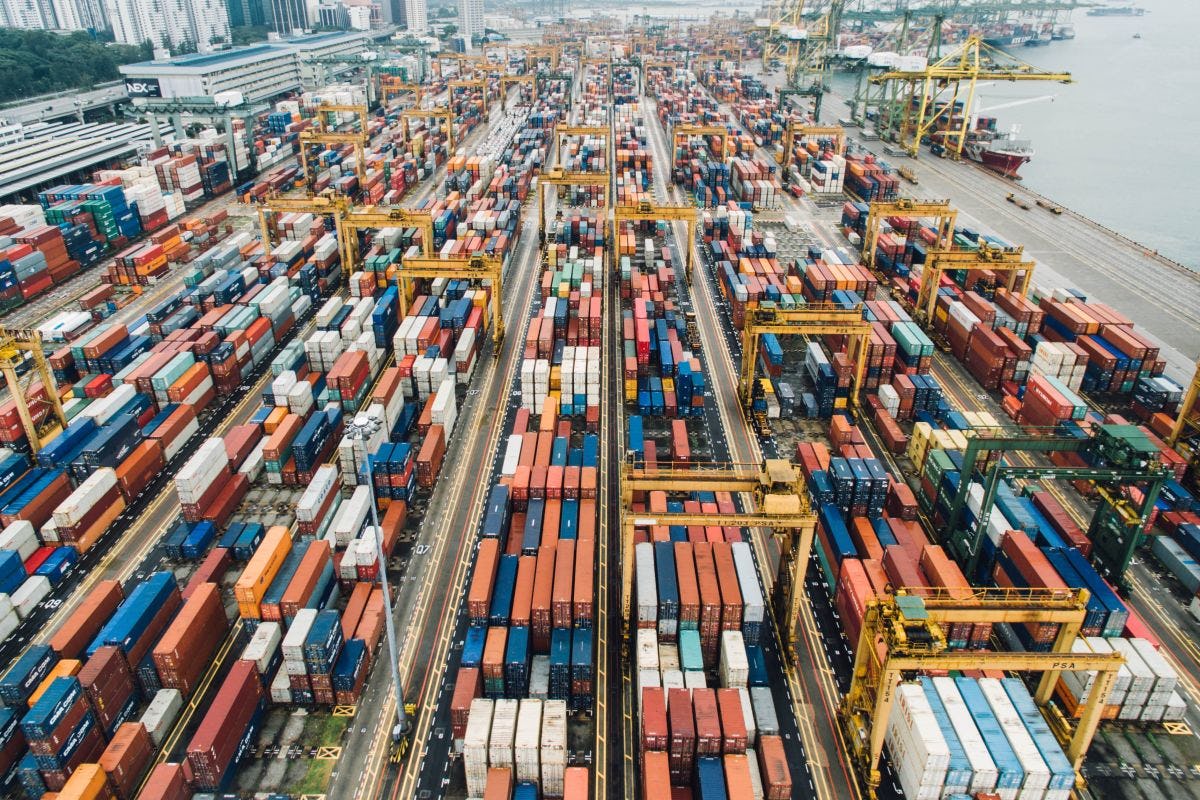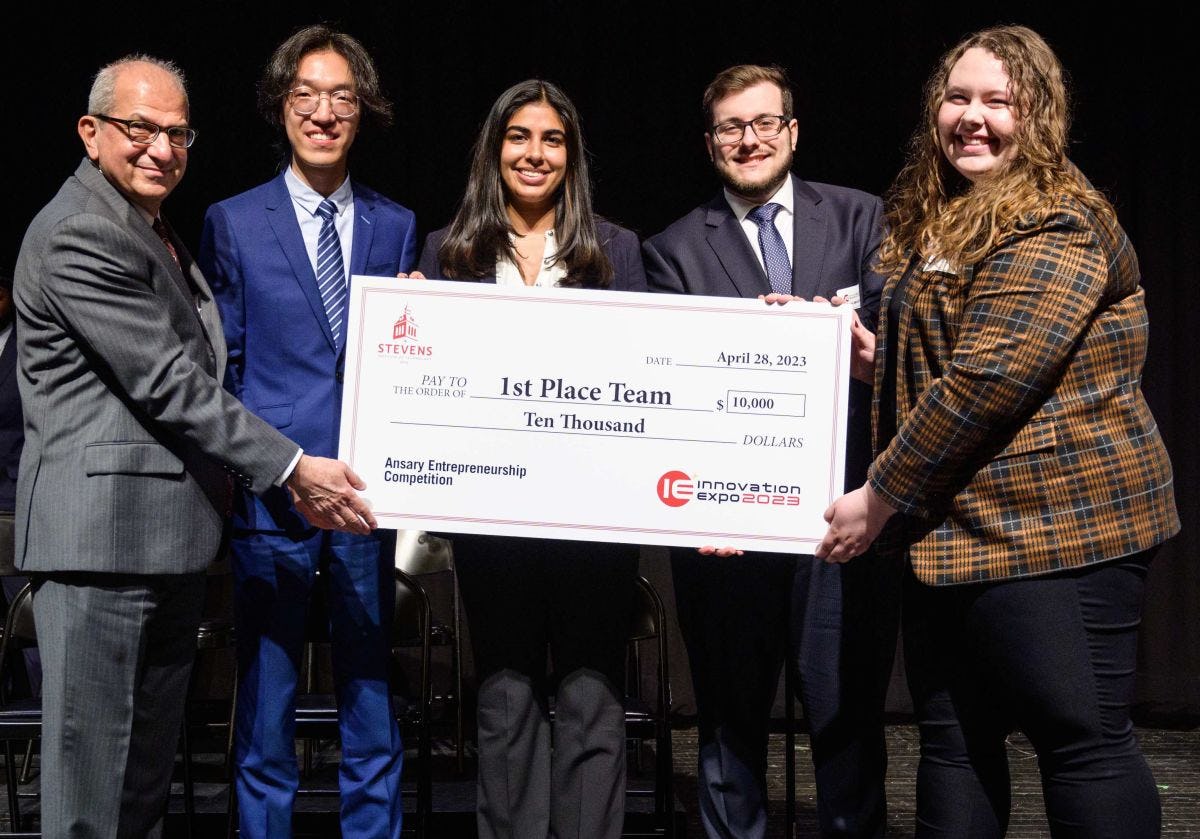Stevens master’s student and startup founder Samantha Weckesser ’23 develops AI to spot cargo-ship containers packing hazardous materials — before disaster strikes
Worldwide, several hundred fires take place on cargo-ships docked in port or floating at sea every year. Those fires cause millions (sometimes billions) of dollars’ worth of annual property loss, create unquantifiable environmental damage — and cost human lives.
A June 2023 fire in Newark’s port, for instance, burned for a week and killed two firefighters. A 2020 ship fire in a California naval port destroyed a $1.2 billion ship.
But Stevens alumna (and current master’s student) Samantha Weckesser ’23 is determined to cut down on those numbers.
“Hazardous materials on ships are a huge problem,” says Weckesser. “We want to make a difference.”
Spotting bad apples in a huge orchard
As a high school student on Long island, Weckesser chose Stevens for its proximity to New York City — then quickly discovered she loved both the campus’ intimate size and the academic challenge it held.
“I have a problem-solving brain,” she says. “I’m more of a big-picture thinker. The systems curriculum here is excellent for teaching you how things work.”
Then, during the summer after her sophomore year, a chance project with the university’s legacy Maritime Security Center Sumer Research Institute would turn out to be crucial: the challenge of intelligently assessing cargo containers in port for hazardous materials.
A crush of container traffic flows through the metro New York region’s ports, more than 7 million containers annually. That’s far too many to inspect piece by piece
“The Coast Guard currently has something like four inspectors certified to inspect containers for the Sector, which includes Newark, Bayonne and Brooklyn,” explains Weckesser. “In a year, they can manually inspect maybe 2,400 of those containers.”
Plenty of things can go wrong inside all that cargo, from criminal activity (falsifying the logs) to innocent mistakes and omissions, incorrect packing or stacking, undetected leaks, even failures at the original ports to take basic steps like draining vehicles’ gas tanks of their gasoline and disconnecting their batteries before loading them onto ships.
“There are lots of violations at any given time,” notes Weckesser.
With such limited personnel, the Coast Guard’s critical challenge becomes deciding which ships to board and which containers to open in order to weed out the most dangerous.
That’s where the AI comes in.
After taking on the Coast Guard’s proposed project during the MSC summer institute, Weckesser set to work with computer science undergrad Andrew Narvaez ’23 to perform data analytics with data pulled from a government database called MISLE (for Marine Information for Safety and Law Enforcement). The MISLE data spanned 20-plus years, detailing some 60,000 containers that had been rejected for violations.
“We knew we had something,” recalls Weckesser, noting she and Narvaez began presenting their work at professional conferences.
She then picked the project up again a year later, in the fall of 2022, collecting a senior-design team of industrial and systems engineering majors around her to develop the tech and the proposal further.
That team eventually demonstrated a more finished concept to the Coast Guard, which was again impressed — offering Weckesser a summer internship and beginning to integrate some of its principals into its own inspection protocols.
The project also won the senior team — which included fellow recent graduates Reva Grover ‘23, Dehan Kong ‘23, track star Laura Mathews ’23 and Daniel Wadler ’23 — the $10,000 top prize, in the form of a mammoth-sized check, at the 2023 Ansary Entrepreneurship Competition held during Stevens’ annual Innovation Expo.
“That was awesome,” recounts Weckesser.
Rebuilding the AI; looking at potential markets
Hoping to refine the system further and gain additional intel into port operations and cargo inspection processes, she then spent the summer of 2023 living and working at a Coast Guard barracks on Staten Island, commuting to port facilities, riding along on container inspections and asking plenty of questions.
“I basically made myself a nuisance,” Weckesser laughs.
But she also managed to build a new, even better Python-driven AI from scratch after having a eureka-type realization about the Coast Guard’s database while working on site.
“The database only held information about rejected containers, but those containers hadn’t failed every regulation, only some each. Even the rejected ones had passed some of the regulation checks.”
“We already knew a lot about predicting failure, but I realized this now gave me enough data to begin building a better algorithm that could learn about and predict compliance of containers.”
She eventually trained a new model to make intelligent predictions about the hazards that might lurk within individual containers, using such factors as country of origin, individual shippers’ historical track records and the types of cargo in those containers to rate the likelihood of one or more regulation violations in any given container.
Without ever even touching it.
“Samantha’s enthusiasm and innovation is raising the bar on how Coast Guard Sector New York carries out hazardous material regulatory enforcement on containerized shipments,” comments John Hillin, division chief of safety and security for the sector, which includes ports in the metro New York region as well as Albany’s.
“She is developing an algorithm that will ultimately scan through thousands of shipments and highlight those posing the greatest safety threat for Coast Guard Sector New York container inspectors to intercept, inspect and resolve.”
During that busy summer internship, adds Hillin, Weckesser even found herself in the middle of the incident response to an active cargo ship fire.
“With no time to spare, she quickly organized and visualized the location of onboard containerized cargoes for the incident command staff to use and prevent containers from toppling overboard, mitigate the environmental threat and inform the fire team of potential hazards if the fire had spread to the cargo deck,” Hillin recounts.
“Her efforts helped protect people, property and the environment.”
Now, as Weckesser wraps up her master’s degree (obtained through Stevens’ accelerated masters program) this fall, she has also just launched a startup venture called Homer with Narvaez and Stevens professor Matt Wade to further refine, commercialize and market the cargo-scanning AI.
“We obviously want the Coast Guard to use this, and they appear very interested,” concludes Weckesser, who is also searching for a full-time position while she builds the company. “But the maritime industry also has a huge need to control its liability. If I have your manifest, I can use this tool to alert you of a concern before you even start to load, before that cargo ever gets put on that boat.”
“That’s the goal: to prevent accidents before they occur.”




